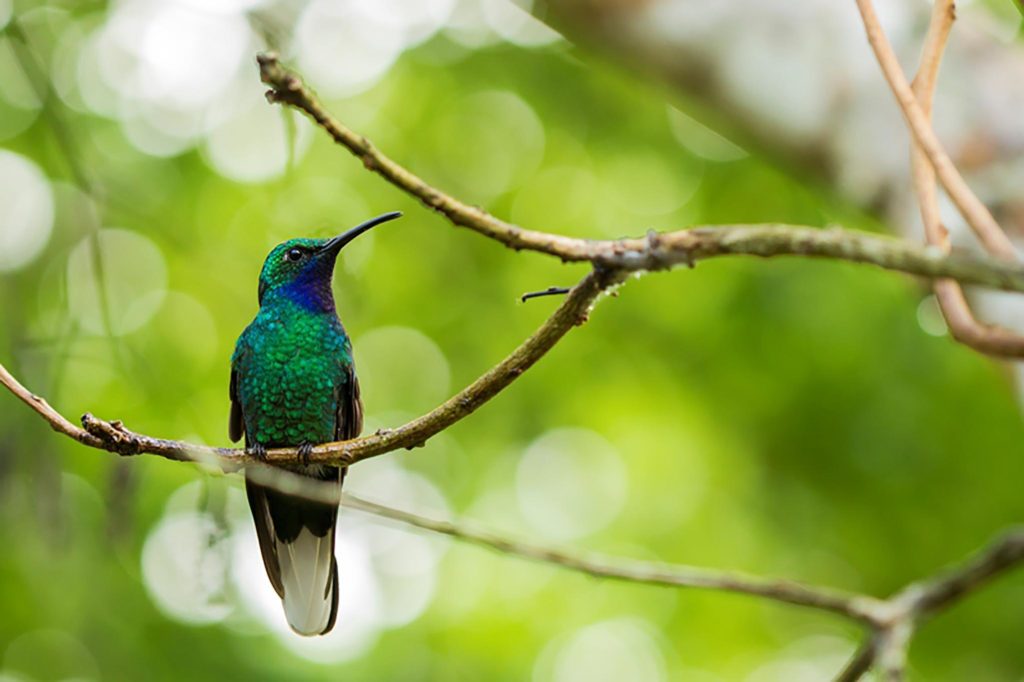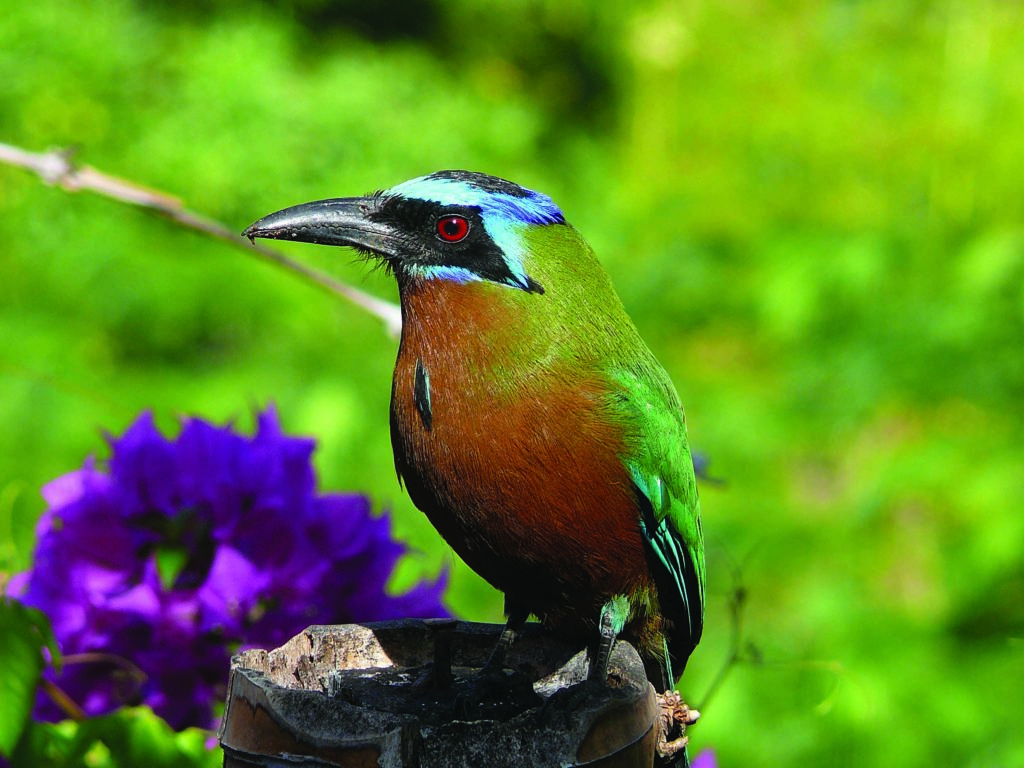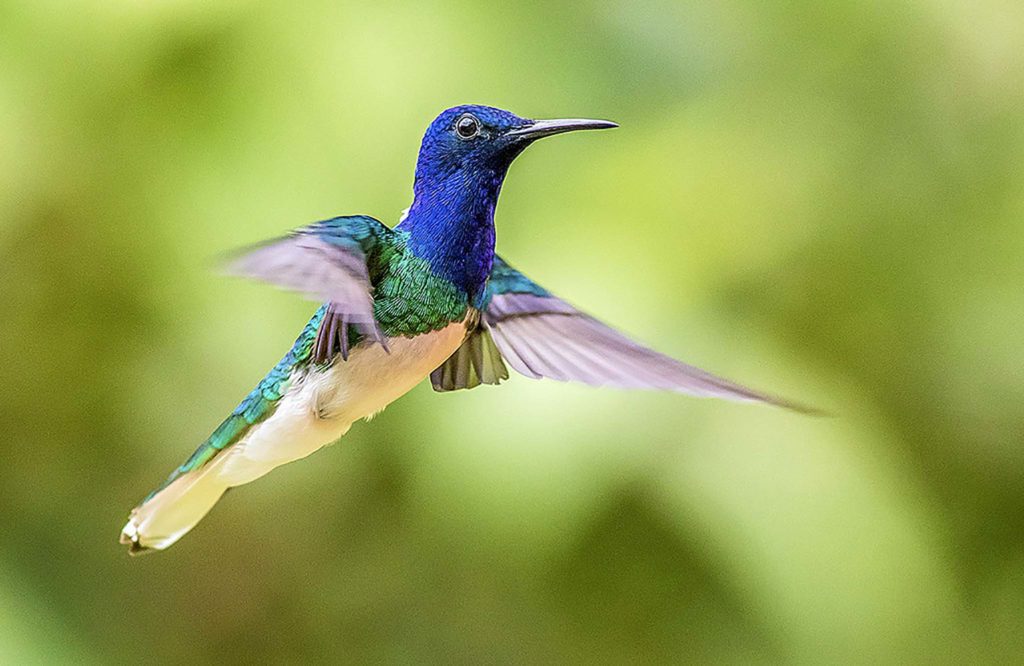With one of the highest densities of bird species in the world, Tobago is a birdwatcher’s paradise. The canopies and trees of the lush Main Ridge Forest Reserve are home to over 260 species alone, making it the best place on the island to spot them. Here are just seven to tick off when you visit…
1. Rufous-vented chachalaca

One of Tobago’s two national birds, along with the scarlet ibis, the rufous-vented chachalaca (also known as the cocrico) is the island’s only game bird. Identified by its chocolate-brown plumage and a large tail that, when fanned, shows off its teal and scarlet-tipped feathers, they can often be found foraging for fruit on the reserve’s forest floor, while their calls can usually be heard in the early morning or late in the evening. Like all birds which inhabit Tobago’s inner forested areas like Main Ridge Forest Reserve, December to April is the prime time to see them, in particular March and early April, when they’re at their most active.
2. White-tailed sabrewing

After Hurricane Flora ravaged much of Tobago’s rainforest in 1963, it was thought to have made the white-tailed sabrewing extinct. But this large hummingbird was rediscovered in 1974 and even though it’s still considered one of the world’s rarest hummingbirds its numbers have steadily climbed ever since. Their emerald feathers, blue throat and white tail mean they can easily be spotted flitting among the reserve’s canopies (one of only two places in the world it can be found), while their inquisitive nature means they may even hover nearby for a closer look at you.
3. Trinidad mot mot

More abundant in Tobago than its neighbouring island of Trinidad (but found nowhere else in the world), the Trinidad mot mots are characterised by their amber breasts, green feathers and electric blue and black heads. Usually spotting flying alone, look to the ground for these birds as they hunt through thick vegetation for small reptiles to eat or patrol the forest floor for a fruity snack.
4. Ruby Topaz

The Ruby Topaz Hummingbird, Chrysolampis mosquitus, is considered as one of the most spectacular and colourful hummingbirds in the world. The male is unmistakable with a golden throat, a ruby-red crown, and an orange tail with dark tips. The female is trickier to identify, but note the pale grey underparts, white-tipped tail feathers, and dull greyish-green upperparts.
5. Blue-backed manakin

You’ll need eagle eyes to catch the bright flash of a male blue-backed manakin among the reserve’s thick jungle, Tobago’s only manakin. Its pastel blue patch on its back and crimson head blotch are a stark contrast to its soot-black plumage, making its striking colours easier to spot. Keep your eyes peeled on the lower branches, as this is where the males also perform joint mating displays with one another to attract females.
6. Fuscous flycatchers

Despite its unremarkable coloured feathers, mainly brown with chalk-white buff wing bars, the fuscous flycatcher’s distinctive chip-like call will help to catch your attention. Stay low for this bird, as it usually perches in the undergrowth, waiting for opportunities to pop out and catch insects. They’re especially prevalent along the Gilpin Trace, Tobago’s most well-known walking trail which cuts through Main Ridge Forest Reserve.
7. White-necked jacobin

Another of Tobago’s large hummingbirds, the male white-necked jacobin is especially attractive with its sapphire head, shimmering green feathers and white belly. Also known as the collared hummingbird, your best bet for spotting its tropical colours is in the sparser areas of the reserve where there are fewer trees, while they also love seeking out the forest’s flowering bushes to draw out their nectar.
